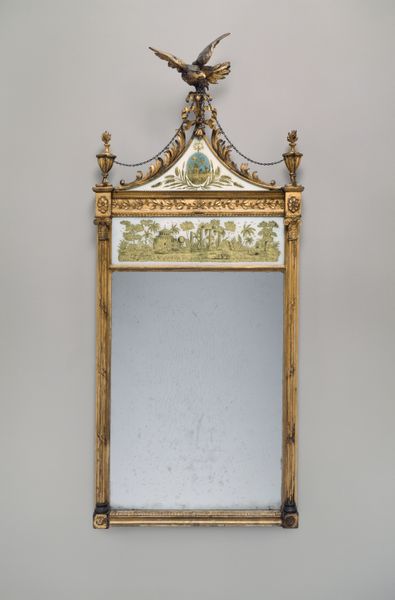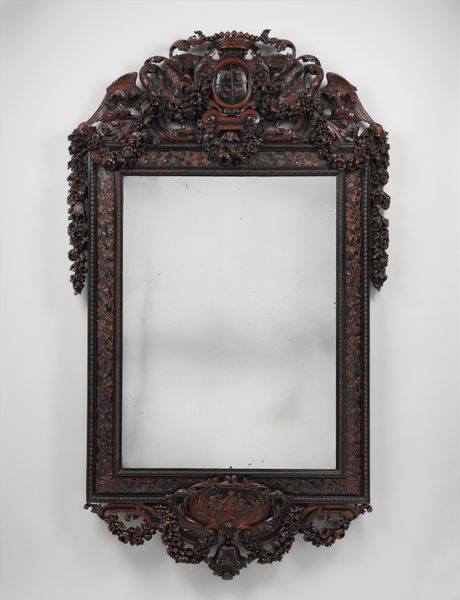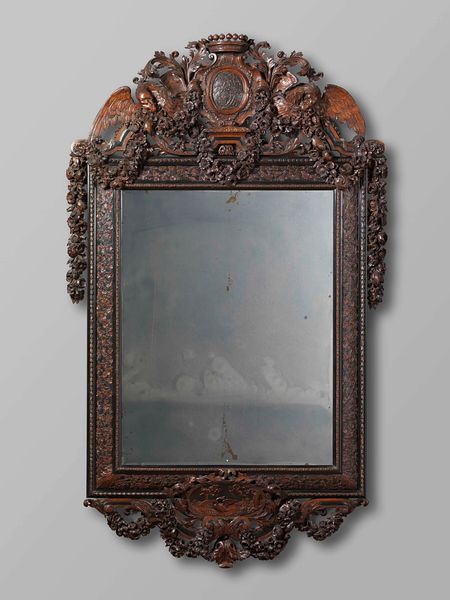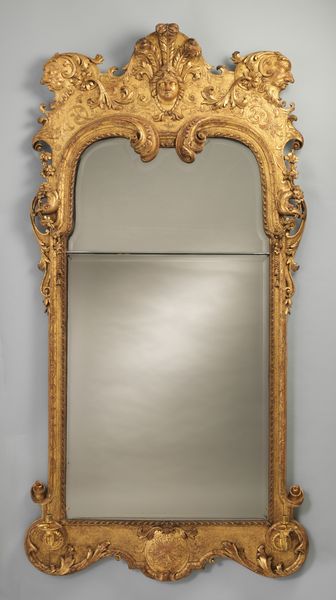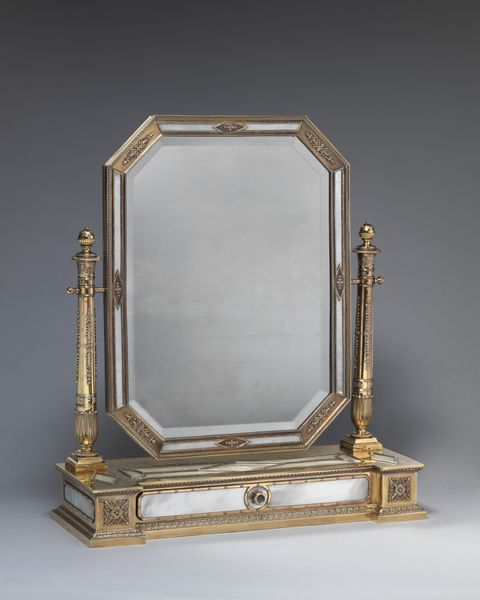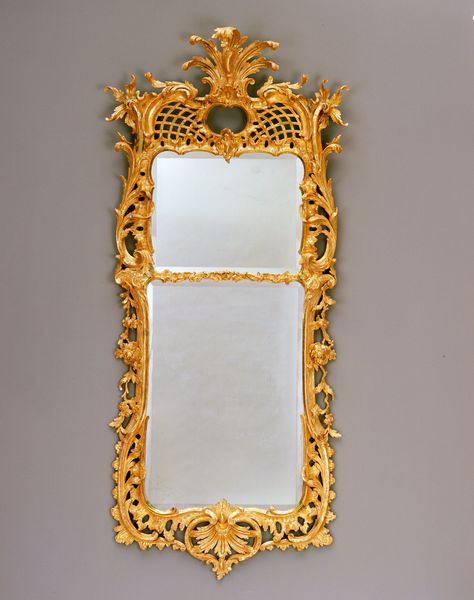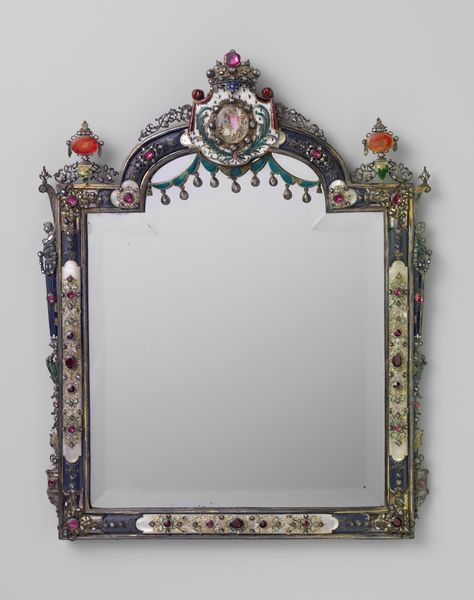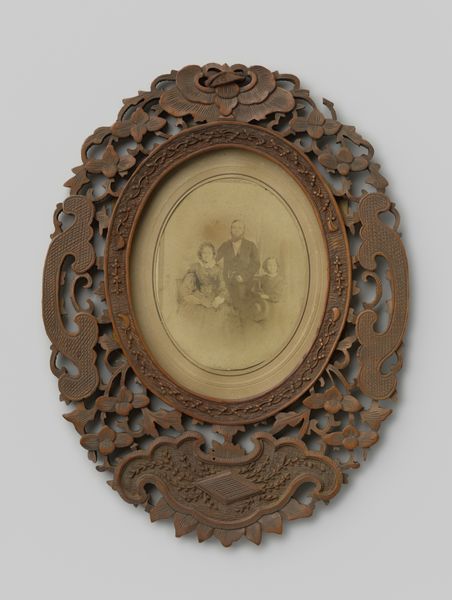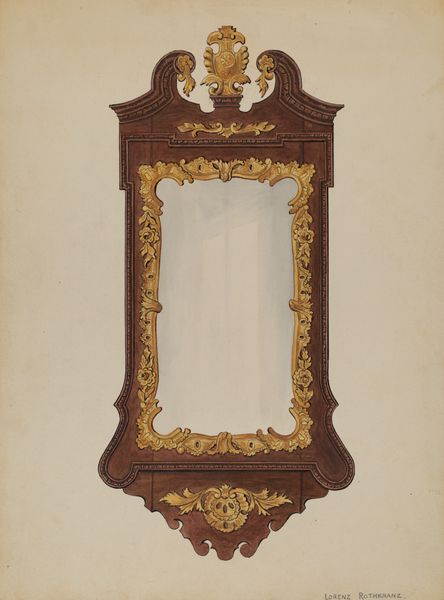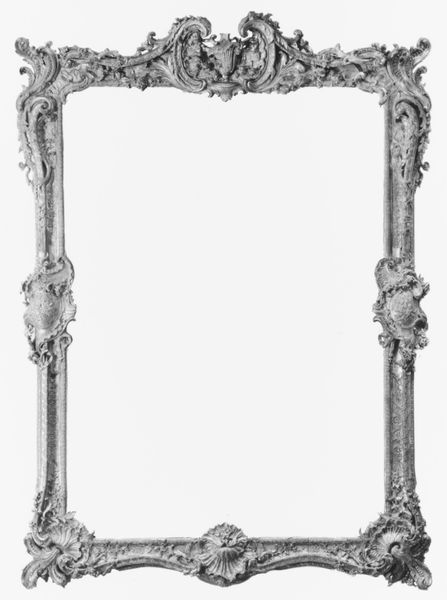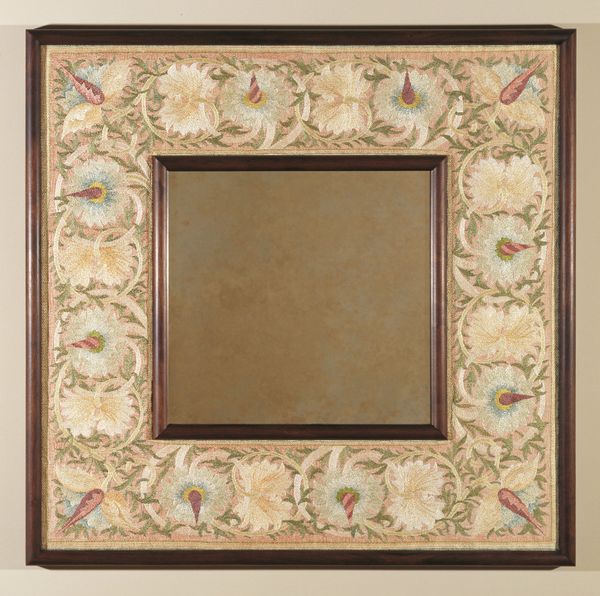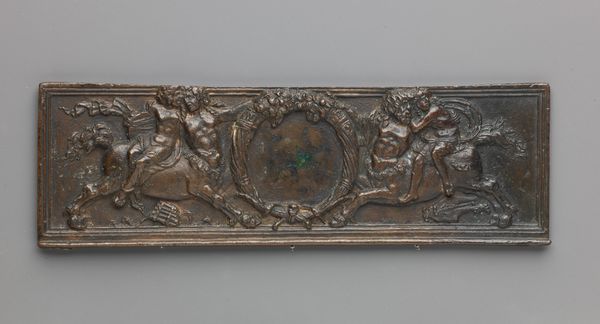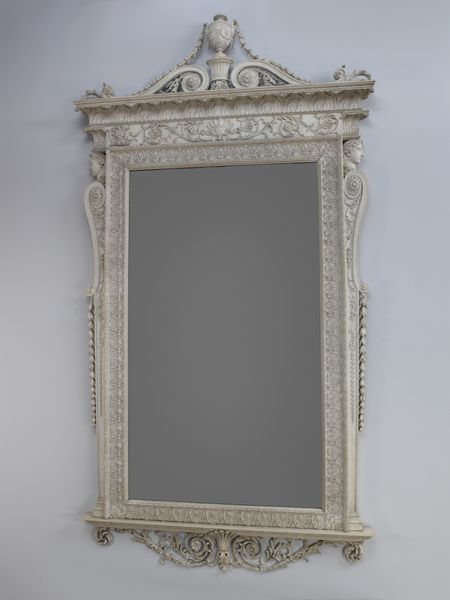
silver, metal, relief, sculpture
#
portrait
#
silver
#
metal
#
sculpture
#
relief
#
mannerism
#
figuration
#
11_renaissance
#
sculpture
#
decorative-art
Dimensions: wt. confirmed: 11 5/8 × 9 1/8 in., 47.615oz. (29.5 × 23.2 cm, 1350g)
Copyright: Public Domain
Editor: Here we have a "Relief mounted as a mirror frame," created between 1563 and 1573 by Wenzel Jamnitzer. The mirror is assembled with silver and metal relief. It’s quite intricate, and honestly, a little overwhelming with all the figures. What aspects of its composition strike you most? Curator: The complexity of the relief is indeed a defining characteristic. Notice how Jamnitzer uses the silver to create a highly textured surface, a play of light and shadow that activates the entire frame. This deliberate use of chiaroscuro accentuates the Mannerist qualities, the distortion and exaggeration of form. Editor: Mannerist qualities? Like how the figures are posed? Curator: Precisely. Observe the elongated limbs, the somewhat artificial poses. There’s a tension created by the artist between naturalism and artifice. How does this tension affect your understanding of the mirror as an object? Editor: It makes me think the mirror wasn't just meant to be functional; it’s making a statement. It's not just reflecting an image; it is an image. The materials elevate it beyond mere utility. Curator: An astute observation. Consider also the distribution of weight. The central oval of the mirror is surrounded by a dynamic asymmetry, achieved by varying the density and placement of figural elements. Do you feel this enhances the artwork or detracts? Editor: I think it gives it energy. I like how the busyness around the edge directs your gaze to the stillness of the mirror's surface. Curator: Indeed. The formal elements—texture, asymmetry, and chiaroscuro—work together to create an object that demands attention and rewards close looking. Editor: I now appreciate the artist's choices so much more; thinking of how all the individual formal elements work together, creating something meaningful. Curator: The Mannerist style becomes much more apparent when deconstructing the piece this way, doesn't it? It really focuses on the structure and how everything sits together.
Comments
No comments
Be the first to comment and join the conversation on the ultimate creative platform.
